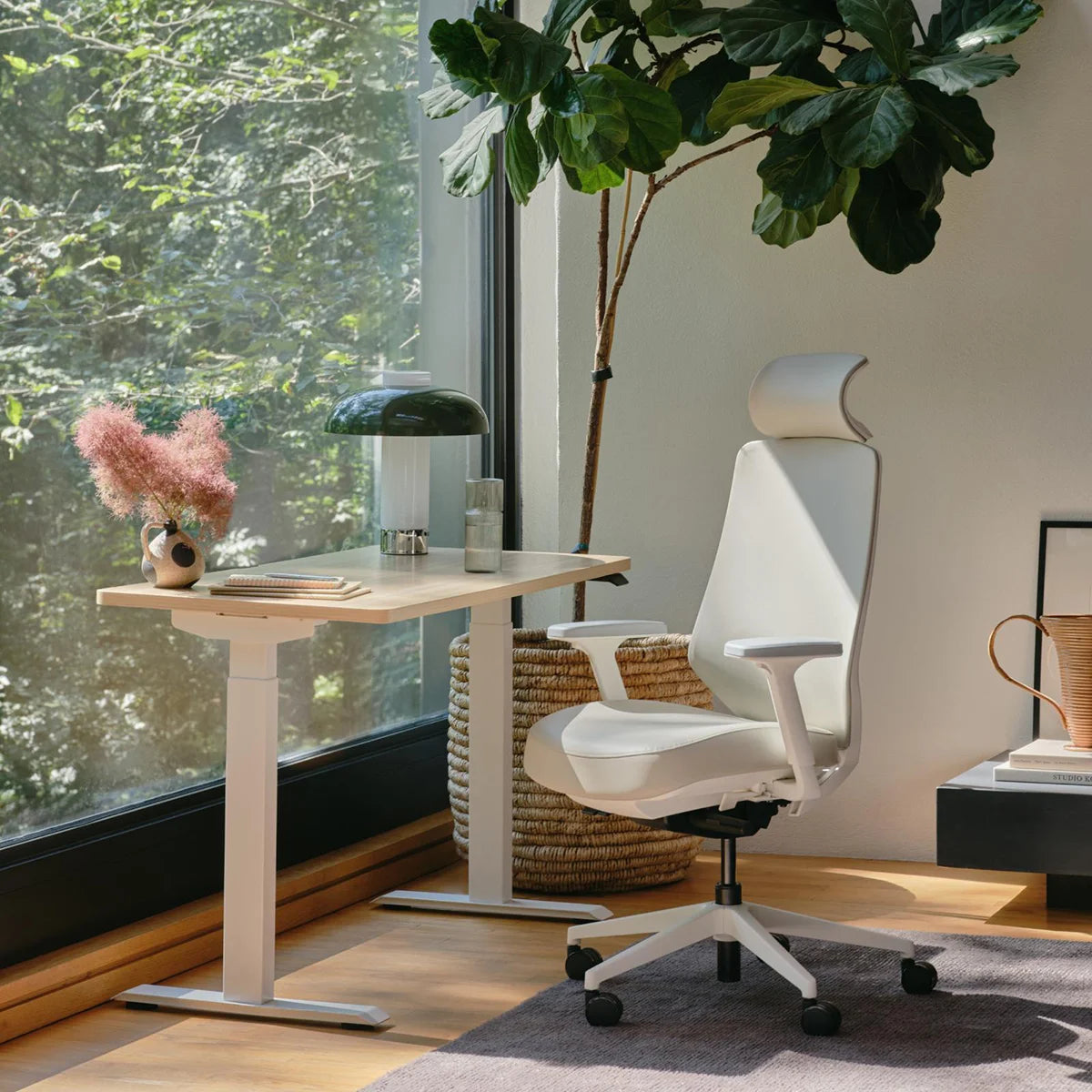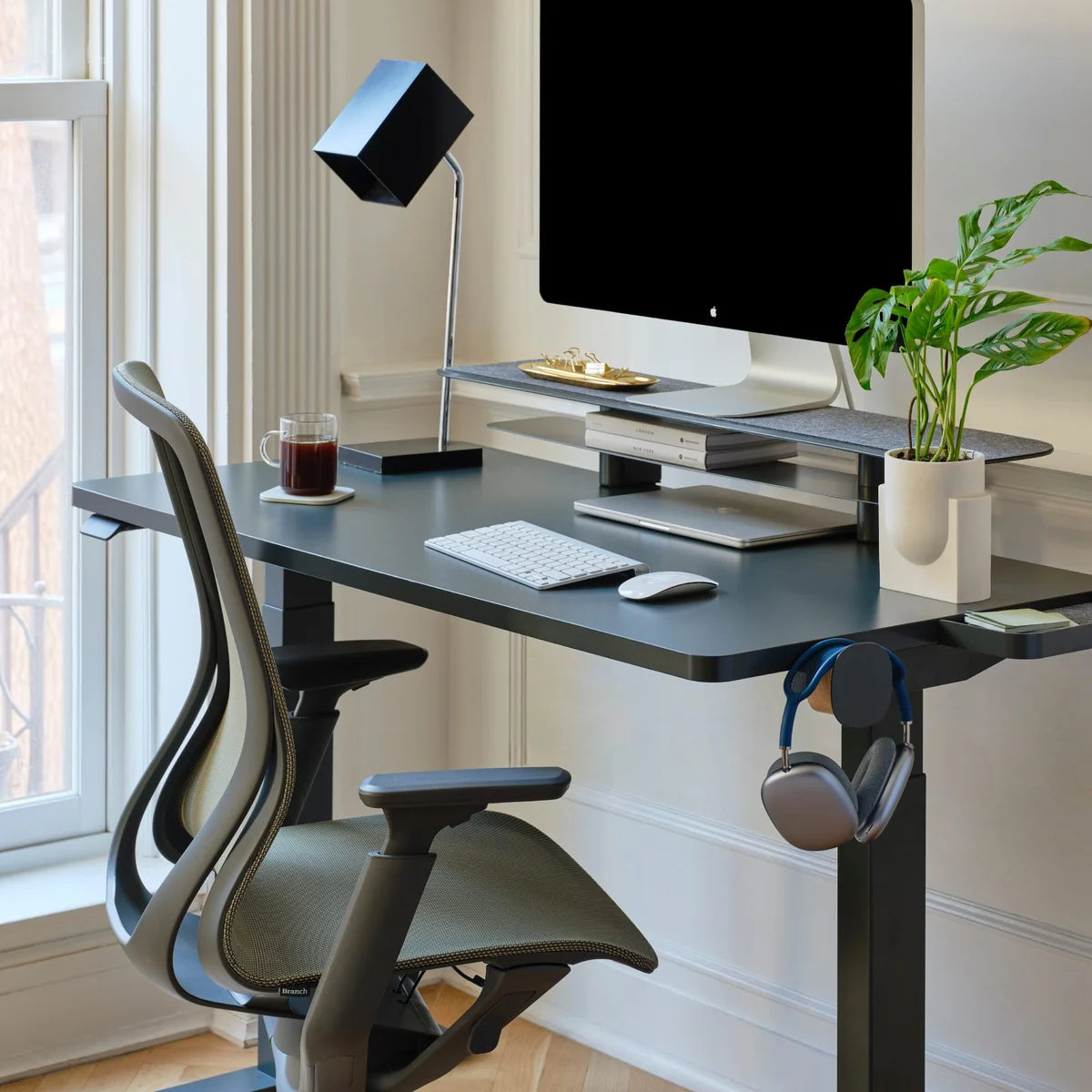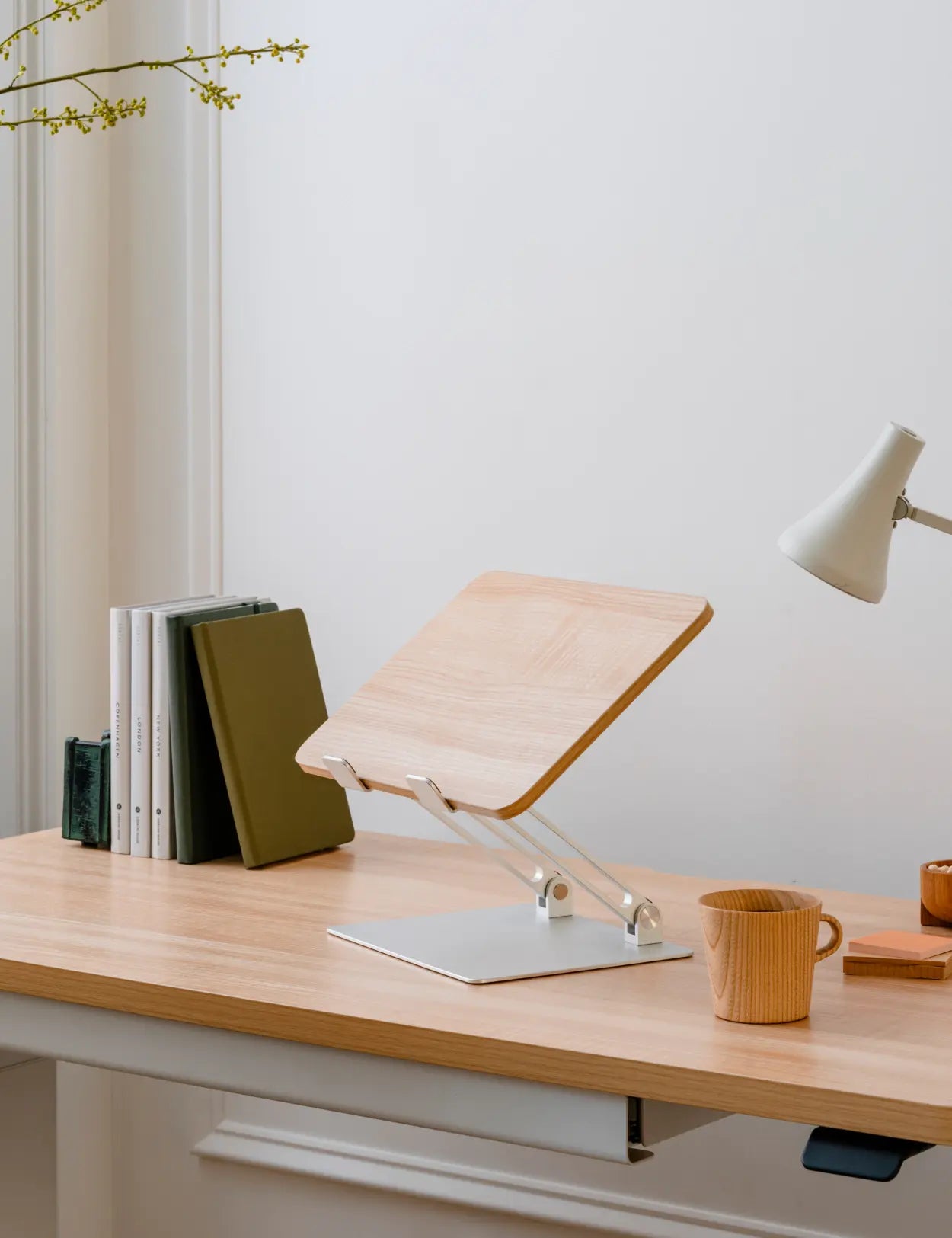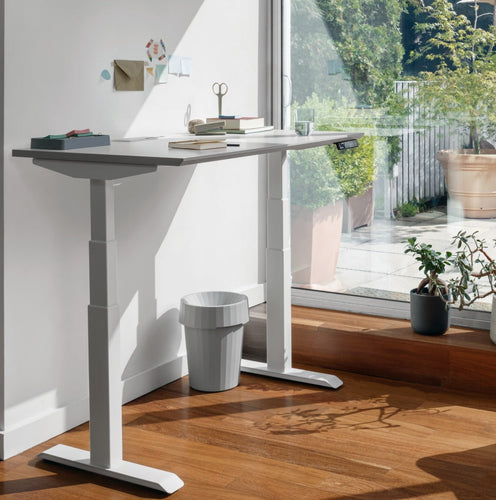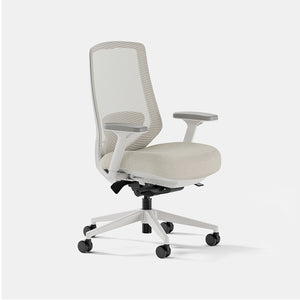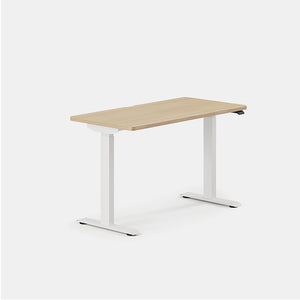Discover how standing desk ergonomics can help you avoid back and neck pain, enhance your mood, and help you be more productive during the workday.
What Are the Benefits of Proper Office Ergonomics?
Learning the science behind proper ergonomics can help you be more productive, improve efficiency, and minimize discomfort throughout your workday.
Most importantly, it can help you avoid serious health problems too. Studies show that you can reduce your chances of type 2 diabetes, cancer, and cardiovascular disease by making one small lifestyle change — reducing the amount of time you spend sitting.
Ergonomic experts recommend a sit-stand desk to optimize alertness and reduce back pain due to prolonged sitting. Employees can focus better and work more efficiently when they are comfortable in their work environment.
It also puts you in a better mood since the body releases endorphins while standing. When you notice your back, neck, or shoulders begin to ache, simply take a standing break to reduce some of the pressure and feel more energized.
A sit-stand desk like our Duo Standing Desk can offer flexibility for any on-site or home office, so you can easily alternate positions and add more movement into the workday.
Sitting Desk Ergonomics
There’s no way around it: Almost everyone has to sit at some point throughout the workday. An ergonomic workstation can help keep you comfortable, even if you have to sit for long periods.
The key to less back pain is to take notice of your posture and how easily you’re able to reach the objects you use most often. If you’re not paying attention, it’s easy to overlook that your wrists or hands are bent sideways every time you reach for the keyboard.
It’s a smart idea to take inventory of your desk setup every so often. Notice your desk height, how you’re typically positioned in your office chair, and the location of your computer screen. As you analyze your workstation, keep these tips in mind:
Ergonomic Chair
Choose an ergonomic chair that offers lumbar support and hugs the natural S-curve of your spine. Make sure you know how to adjust the height of your chair so that your feet can rest flat on the floor with your legs at a 90-degree angle.
If the height of your desk requires your office chair to be higher, use a footrest or stack of books to keep your thighs parallel to the floor. Rest your arms gently on the armrests with your shoulders relaxed. Ergonomic office chairs can help support you through six to over eight hours of work while adding an interesting architectural element to your home setup.
Keyboard and Mouse
The computer mouse and keyboard should be on the same surface and within easy reach. Keep your wrists straight and your upper arms close to the body while typing or using your mouse. Your hands should be level or slightly below your elbow height.
Some ergonomic keyboards can take a bit to get used to, but they’re an excellent investment. At the very least, flatten the tabs on the underside of your keyboard so that it lies flat and your wrists can stay in a neutral position.
Placing a palm support in front of your keyboard is an easy way to avoid issues such as carpal tunnel syndrome. Remember, the goal is to keep your wrists as straight as possible.
Monitor
Improper monitor height and position are one of the major components that cause us to lean forward and slouch at our desks. To avoid eye strain, check that you can clearly see what’s on your monitor or laptop screen without having to bend your neck.
The monitor should be directly in front of you, about an arm's length away, with the top of the screen pretty close to eye level. To keep a neat and tidy workspace, we recommend a quality monitor arm that is fully adjustable.
How To Maximize the Benefits of a Sit-Stand Desk
It’s kind of pointless to buy the desk of your dreams if you’re not going to use it properly. To take full advantage of the many health benefits of a sit-stand desk, it’s essential to understand the type of setup you need to maintain the healthiest posture throughout your workday.
One of the best features of a sit-stand desk is that it allows the user to alternate between sitting and standing. To get used to standing desks, new users find it helpful to stand for two hours at a time and work their way up to eventually standing for four-hour intervals.
Here are a few tips on the best way to incorporate standing into your daily work routine:
Posture
As we know, posture is huge when it comes to office ergonomics. Stay aware of how you’re holding your body, and make it a goal to keep your neck, head, torso, and legs in line with one another and vertical. Lastly, don’t forget to wear supportive shoes when standing!
Adjust Your Position as Necessary
The benefits of standing begin to diminish if done for too long. The great part about an adjustable standing desk is that you have the ability to change positions (but don’t forget to adjust the monitor, keyboard, and mouse).
Your standing desk should be around elbow height. This means that you can comfortably rest your elbows on the desk surface and keep them in a 90-degree position with the floor. To give you an idea, the desk should be around 44” off the ground for someone who is 5’11”.
Pay attention to how you hold your wrists when standing for extended periods. The ideal position is to keep them straight or slightly tilted upward when typing or using the mouse.
Choose a Reliable Standing Surface
Remember to pay attention to the type of surface you’re standing on each day. A hard floor can be hard on your body over time. Studies have shown that people who stand for two or more hours per day report less tiredness and less discomfort when utilizing a standing desk mat.
An anti-fatigue mat is the best way to increase blood flow and reduce overall discomfort at the end of the workday. It also helps with leg problems and lower back pain too. To switch things up, try a footrest under your standing desk to rest and stretch your feet throughout the day.
Take Regular Breaks
Taking frequent breaks is a helpful way to reduce repetitive stress injuries and musculoskeletal disorders. Alternating between sitting and standing is a great start, but you also need to walk away from your workstation every so often to stretch your body, rest your eyes, and clear your mind.
Ready for some welcome news? Most people experience more creativity and better focus when they consistently take short breaks throughout the day.
If you find it challenging to remember to step away from work, set a reminder on your phone or computer and give it a try to see how you feel.
Additional Tips and Tricks
If you’re going to be adjusting the height of your desk throughout the day, keep it as clear of clutter as possible. It’ll make the process that much easier to correct the height of your desk too.
Desk accessories should function as much more than decoration. Accessorizing your desk with the right pieces can help everything stay neat and tidy as you alternate positions. Keep things simple with a modern desktop organizer to keep things in their place.
Whether you’re setting up an on-site or home office, consider speaking with your HR department about fixing your desk ergonomics. You might be allowed an office stipend to cover expenses accrued for new office equipment.
What Are the Disadvantages of Standing?
While standing desks offer numerous benefits, it’s not all good news. Standing for prolonged periods can come with its own set of disadvantages if not done correctly. It’s essential to understand these potential downsides to avoid health issues and maximize the benefits of your workspace.
Fatigue and Muscle Strain
Standing for extended periods, especially without proper movement, can lead to fatigue, muscle strain, and discomfort. The legs and lower back can bear significant weight when standing still, which, over time, can cause soreness and tension.
Without frequent breaks or shifting positions, you may begin to develop bad posture, which can negatively impact your spine alignment and overall well-being. A poor standing position can lead to long-term musculoskeletal problems, including pain in the neck, shoulders, and hips.
Increased Risk of Varicose Veins and Joint Pain
Another disadvantage of standing for too long is the increased risk of developing varicose veins. When you stand in one position, blood pools in the leg, putting pressure on veins and leading to discomfort and swelling.
Also, standing still for too long can strain the joints, especially the knees and ankles, causing stiffness or pain. Office workers who spend much of their time standing without proper support or movement may experience these issues more acutely.
Balancing Sitting and Standing
One of the biggest challenges is finding the right balance between sitting and standing. While sitting for prolonged periods is known to cause health issues, standing too long can also be problematic.
To reduce discomfort, it’s essential to alternate between both positions throughout the workday. Using a height adjustable desk can help transition smoothly between sitting and standing. These tools provide flexibility and allow you to maintain a neutral posture and minimize strain on your body.
Reduced Focus and Productivity
Standing for long periods without breaks can also affect focus and productivity. Fatigue from standing can make it harder to concentrate, leading to decreased performance over time.
Taking short breaks or changing your standing position regularly can improve circulation, boost energy, and help maintain alertness. If you haven’t noticed by now, taking breaks is absolutely essential to maintain your overall wellness and perform at the highest level.
What Is the Importance of Movement While Standing?
Maintaining movement while using a standing desk is crucial for maximizing the benefits of a standing position and minimizing discomfort. Although standing can alleviate some of the risks associated with prolonged sitting, staying static for too long can lead to fatigue, muscle tension, and other health issues as we discussed in the last section.
Below are several reasons why incorporating movement into your standing routine is essential.
Enhances Blood Circulation
Regular movement encourages better blood flow throughout the body, reducing the risk of varicose veins and alleviating fatigue. When you stand in one position, blood can pool in the lower extremities.
Simple movements such as shifting your weight from one foot to the other, taking a few steps, or performing light stretches can keep your circulation flowing and enhance your overall well-being.
Prevents Muscle Fatigue and Strain
Prolonged standing can lead to muscle fatigue, especially in the legs and lower back. Incorporating movement helps engage different muscle groups and distributes the physical stress more evenly.
Simple actions like calf raises or leg lifts can strengthen muscles and prevent overuse injuries. A keyboard tray that allows for slight adjustments can also encourage better posture and reduce strain on your neck and shoulders.
Boosts Productivity and Focus
Movement is not just beneficial for physical health; it can also significantly enhance cognitive function. Taking short breaks to walk around or stretch helps refresh your mind, leading to improved focus and productivity. Engaging in light physical activity while standing allows you to return to your tasks with renewed energy and clarity.
Bottom Line
There really is no such thing as a typical office space anymore. As long as you have WiFi and a laptop, you can work from virtually anywhere. But one thing remains the same: a comfortable workspace could give your workday the boost you’ve been looking for.
Source:
How Many Hours Does the Average Person Work Per Week? | FreshBooks
Sitting is the New Smoking - The Risks of Extended Sitting | Start Standing
Office ergonomics: Your how-to guide | Mayo Clinic
Normal Curves of Your Spine | HealthCentral
Anti-fatigue mats, low back pain, and electromyography | National Institutes of Health
4 ways to turn good posture into less back pain | Harvard Health
One third of your life is spent at work | Gettysburg College
The Advantages of Ergonomics | Oregon Occupational Safety and Health
Taking Breaks Is Good for Your Brain — Here's Why | UW Medicine
On new furniture, exclusive sales and more.





